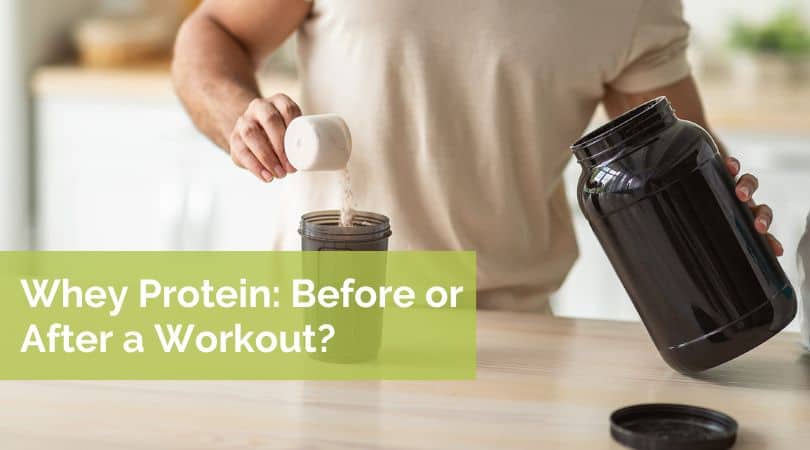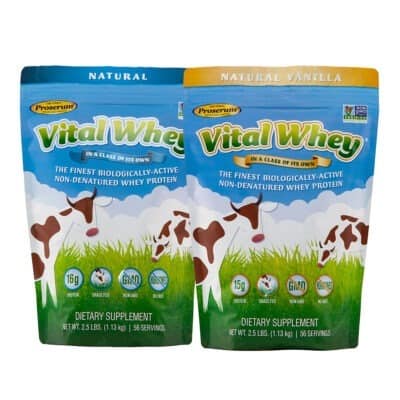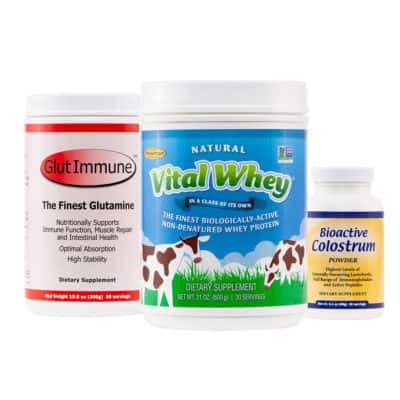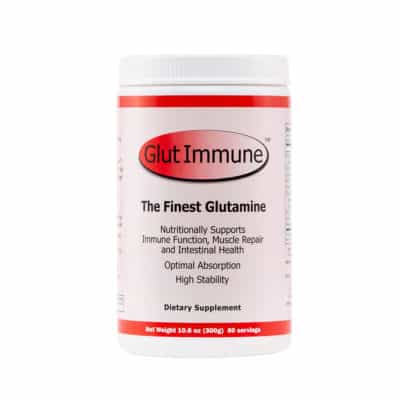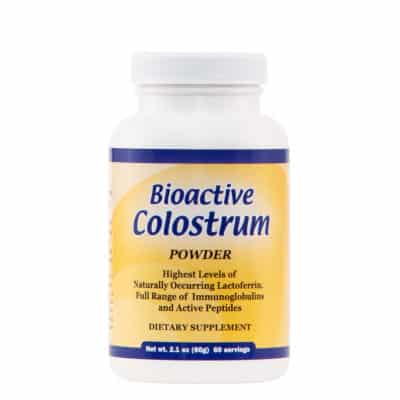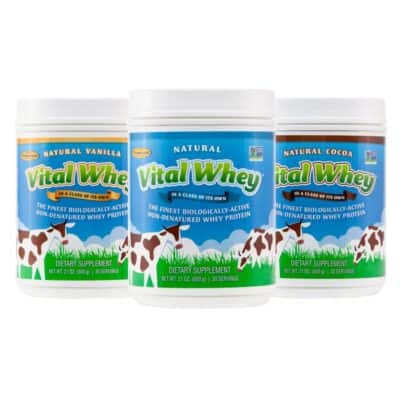In recent years, many people have started to understand the countless benefits of whey protein for overall health and wellness. However, those in the fitness world have been singing its praises for a long time… and for good reason. But should you take whey protein before or after workout sessions?
If you are someone who enjoys lifting weights, playing sports, or working out, you may be interested to know how a high-quality whey protein supplement can benefit you. You may want to know how to fit it into your fitness routine and how it can be added to your diet to boost your desired results.
This article uncovers how to incorporate whey protein into your routine and whether you should take protein powder before or after workout sessions.
Benefits of Whey Protein for Fitness
Multiple studies have provided insight into the benefits of whey protein for fitness enthusiasts. High-quality whey protein can provide the building blocks needed to repair muscles and speed up recovery time after a workout.
Everyone has their own unique protein requirements, depending on age, sex, medical status, and activity level. A statement published by the ADA, DOC, and ACSM recommends that endurance and strength-trained athletes need between 1.2 and 1.7 g/kg (0.5 – 0.8 grams per pound) of protein to support their physical activity and muscle strength.
You can use this handy tool below to help calculate your protein needs:
| Your body weight in pounds x 0.4-0.7 grams = protein (grams) |
When calculating your protein needs, it’s important to account for your activity level. For example, there could be two people that weigh the same but have vastly different protein requirements depending on their level of activity. With increased activity, your muscles require more protein to repair themselves, so your level of fitness training should be an important consideration.
Let’s dig deeper into your most burning questions about whey protein such as:
- When Do You Need Protein?
- Should I take protein before or after workout sessions?
- How to take protein before or after workout sessions?
- Should you take whey protein before or after a workout for weight loss?
- How to choose a whey protein supplement
The timing of your protein depends on your personal goals and lifestyle. Here are a few tips for optimizing your protein intake.
Prioritize Protein First Thing in the Morning
Multiple studies have shown that consuming a high-protein breakfast instead of a high- carbohydrate meal will increase fullness and reduce cravings throughout the day.
Typically high-carbohydrate foods will spike your blood sugar and leave you feeling hungry shortly after. Sound familiar? If you’re eating breakfast but it doesn’t contain enough protein, you may find yourself struggling with cravings and hunger all day long.
Research has found that protein can change certain processes related to brain function and it’s role in food cravings. A 2011 study from the University of Missouri found that eating a healthy breakfast, especially one high in protein increases satiety and reduces hunger.
In addition, functional magnetic resonance imaging (fMRI) results found that eating a protein-rich breakfast reduces the brain signals controlling food motivation and reward-driven eating behavior. This means that a high-protein diet can help to reduce or better control emotional eating and cravings for unhealthy foods which may also help to encourage better decision making on the foods you do eat.
Whey is an excellent source of protein to include at breakfast. It also has the highest biological value of any protein available. This means that not only does it provide all nine essential amino acids (protein-building blocks), it also is readily digested and absorbed.
A protein shake made with whey is fast and very convenient, making it a quick and easy breakfast on the go. It can also help keep you full, curb cravings, and support your fitness and muscle-building goals.
Whey Protein Before or After a Workout
You may be surprised to know that there has only been one study on whether one should take protein before or after a workout. This 2017 study aimed to test the impact of pre- versus post-workout protein consumption on 21 well-trained subjects.
The subjects were given either 25 grams of protein before exercise or immediately after. They then worked out three times a week for 10 weeks. The level of muscle gain and strength was the same regardless of when the protein was taken.
This study supports a more novel theory that the timing of protein intake in regard to your workout is not as important. This is the case too when it comes to using whey protein for weight loss. The most important thing is that you are getting enough protein throughout the day.
When deciding if you want to take your whey protein after or before workout sessions, do what’s best for you. If taking protein before your workout makes you feel “heavy”, then taking it after may be better for you. The important thing is to be sure you are getting enough total protein throughout the day to support muscle growth and promote recovery.
How to Take Whey Protein
You may be wondering how to take whey protein before or after workout sessions. Whey protein can be mixed with almost any beverage of your choice. For lower calorie options, consider mixing with water or a lower calorie milk/milk alternative. For something more calorie/nutrient dense, consider a heftier milk or even a juice that is low in citric acid (i.e., apple, pear, or grape). You want to avoid mixing with any juice that is high in citric acid or any hot liquids, as this could potentially damage the proteins.
Give your Protein an Extra Boost!
Take your whey protein to the next level by mixing in other beneficial nutrients. Easy additions that can provide an added boost to your health and energy levels are probiotics, MCTs (Medium Chain Triglicerides), glutamine, and colostrum.
Probiotics – These are live bacteria that are beneficial or ‘friendly’ to our gut. They encourage good bacteria growth and restore the microflora which is a community of microorganisms that are crucial for our gut health. They are now available in many powdered forms and can easily be added to any whey protein shake. (Note: Some yogurts and fermented dairy products may Impact the structure of certain fragile whey proteins due to high acid content so take that into consideration when deciding on the supplement that is best for you.)
MCTs – The acronym stand for medium-chain triglycerides which are made up of a unique combination of fatty acids that can be absorbed directly by the digestive system and used as a quick and simple fuel source, unlike the more commonly found fatty acid structures that take much longer to be digested and processed for fuel. This unique quality makes MCT’s a potentially valuable health supplement for athletes, people with digestive issues, and people training to improve their body composition. Coconut oil and coconut water are both rich sources of MCTs.
Glutamine – This is an amino acid found in the body that is quickly used and depleted during strenuous physical activity. It is also a key amino acid for the maintenance and repair of the digestive system which is a problem area for many serious athletes. Our GlutImmune supplement has been shown to deliver 10 times more glutamine to the bloodstream than the standard L-glutamine.
Colostrum – This is the first milk produced by mammals late in pregnancy and upon initiation of lactation which serves to provide significant immunological boosts. Athletes often find themselves with compromised immune systems due to the added stress on the body. Our Bioactive Colostrum can accelerate the healing of all body tissues, help with weight management, increase lean muscle mass and support a healthy immune system.
Choosing a High-Quality Whey Protein
In order to reap the benefits of whey protein, you want to make sure that you are consuming the highest quality protein supplement you can get your hands on. Don’t let the expensive and flashy companies fool you though. Sometimes buying the more expensive isolates with higher protein per serving content doesn’t always mean the product is better.
Here are a few things to look for in a whey protein powder:
- Seek to find out where the manufacturer is sourcing their milk and how those cows are being fed. Are they fed grains or grass? Grass fed cows have been shown to contain a healthier ratio of good fats in comparison to their grain fed counterparts.
- Read the ingredients label and avoid whey proteins with a long list of additive ingredients. In this case, less is often more.
- Does the protein powder contain artificial ingredients and preservatives? These added fillers may not be needed and can even pose potential health concerns.
These are all important factors to consider when choosing a whey protein. Proserum® which is our grass-fed whey protein concentrate that is found in our Vital Whey line contains high-quality protein from grass-pasture-fed cows. They are disease-free, pesticide-free, chemical-free, hormone treatment-free, and GMO-free.
Our products are all-natural, clean, and contain the highest quality whey proteins with no preservatives or artificial sweeteners.
Vital Whey can help you meet your daily protein needs in a convenient way with the highest quality protein available.
References
- Thomas, D. T., Erdman, K. A., & Burke, L. M. (2016). American College of Sports Medicine Joint Position Statement. Nutrition and Athletic Performance. Medicine and Science in Sports and Exercise, 48(3), 543–568.
- University of Missouri-Columbia. (2011, May 19). Eat a protein-rich breakfast to reduce food cravings, prevent overeating later, researcher finds. Science Daily. https://www.sciencedaily.com/releases/2011/05/110519113024.htm
- Schoenfeld, B. J., Aragon, A., Wilborn, C., Urbina, S. L., Hayward, S. E., & Krieger, J. (2017). Pre- versus post-exercise protein intake has similar effects on muscular adaptations. PeerJ, 5, e2825.
- Best Fitness Supplements: Glutamine and Colostrum Uses and Benefits - December 19, 2019
- Cooking with Protein Powder - November 22, 2019
- Is There A Point To Taking Whey Protein After Cardio? - September 16, 2019

